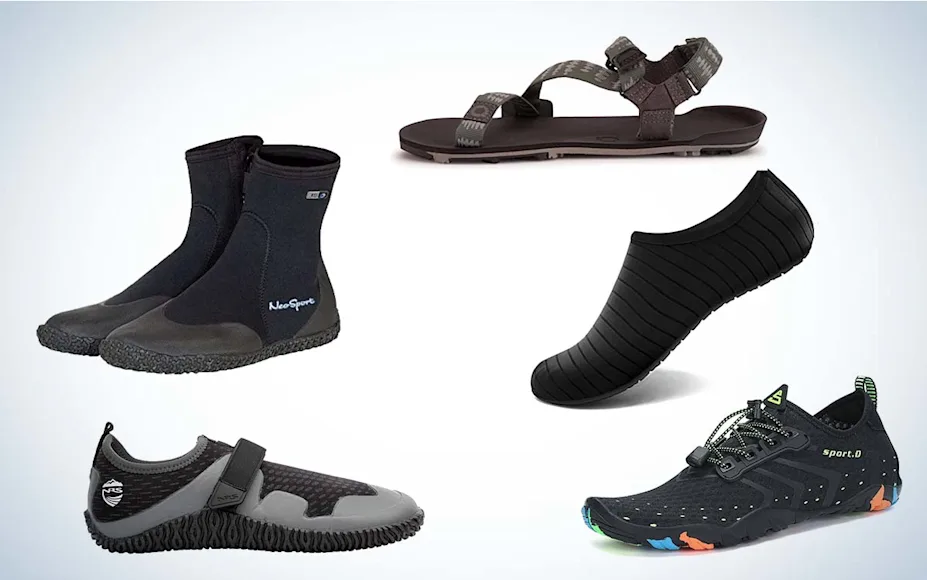_We may earn revenue from the products available on this page and participate in affiliate programs. Learn more ›
_
Best Overall
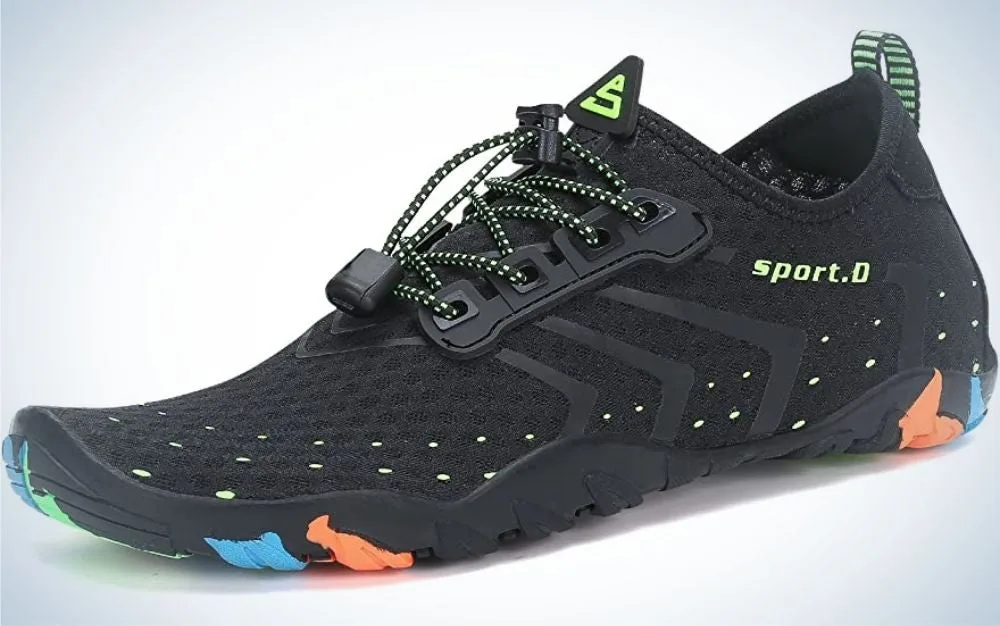
Mishansha Quick Drying
LEARN MORE
Summary
Perfect for a variety of watersports, these provide a secure fit, decent durability, and are available at an affordable price.
Best for Travel
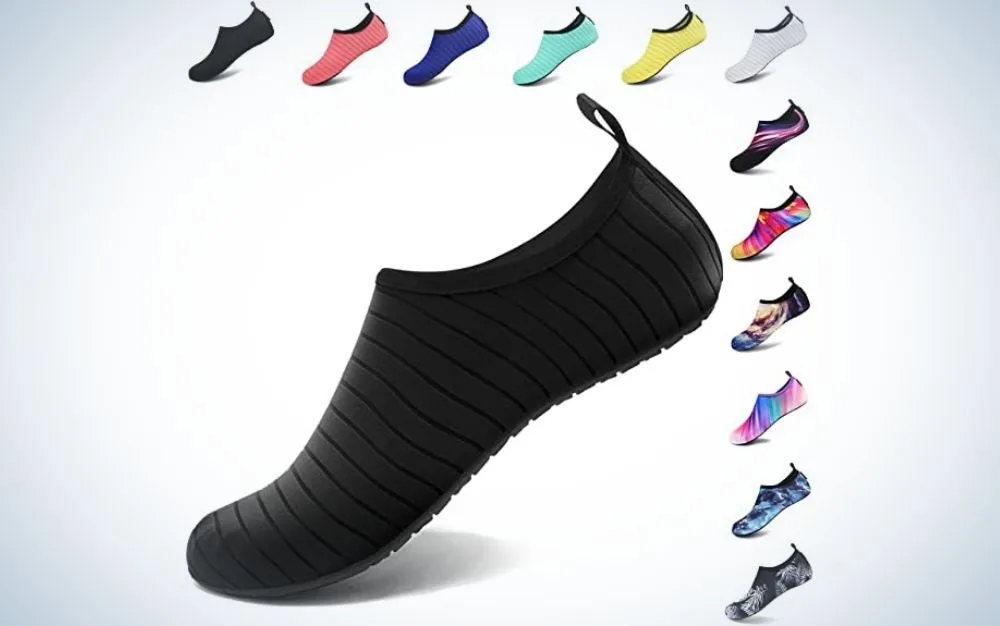
VIFUUR Water Sports Shoes
LEARN MORE
Summary
Compact water slippers that come at a budget price and are perfect for travel.
Best Neoprene
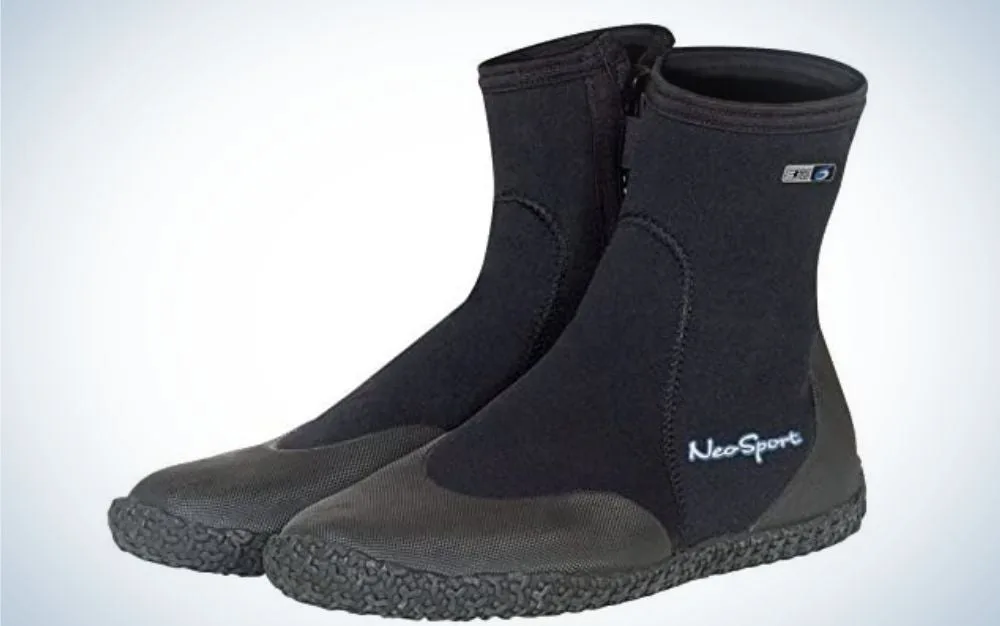
Neo Sport Premium Neoprene Wetsuit Boots
LEARN MORE
Summary
Excellent neoprene shoe option with the ability to personalize for year-round use.
Kayaking shoes is an interesting topic because you can use almost any shoe while kayaking, depending on the level at which you kayak and personal preferences. Realistically, wearing a pair of sandals or water shoes will be better than nothing when you are out kayaking, but some shoes may enhance your kayaking experience.
When looking for the right shoes for your next kayaking venture, standard things like materials, fit, comfort, and breathability should be considered. We did our best to include a variety of options to fit several styles of kayaking on our list, but if you don’t find the best kayaking shoes for you here, read through our buying considerations to help narrow down your choices as you shop.
Best Overall: Mishansha Quick Drying
Best for Travel: VIFUUR Water Sports Shoes
Most Versatile: Xero Shoes Z-Trail EV
Best for Cold Weather: NRS Kicker Remix
Best Neoprene: Neo Sport Premium Neoprene Wetsuit Boots
How We Picked the Best Shoes for Kayaking
The type of kayaking and the frequency you go will influence the shoe you choose. We did our best to include various options that fit people’s lifestyles and needs. Beyond the type of shoe, we also considered the overall durability, price, and fit. Some kayaking shoes are more suitable for cold weather, while others work best for warm weather.
Other factors, including personal experience with some shoes, brand-specific research, supply chain research, and verified customer reviews, were considered. Products may be added, changed, and updated over time to reflect new product testing and updates with extended use.
The Best Shoes for Kayaking: Reviews and Recommendations
Best Overall: Mishansha Quick Drying
Best Overall

Specs
Weight: 9.5 oz
Materials: rubber and spandex
Closure: elastic bungee laces
Pros
Quick drying materials
Drainage holes on the soles
Decent grip
Secure lacing system
Affordable
Cons
Not true to size
Not the best for wide feet
The Mishansha Quick Drying water shoes provide the perfect combination of an affordable price and in-field performance. The spandex and rubber materials are relatively durable, and the shoe’s construction provides a very secure fit. The elastic lacing system makes them easy to take on and off and secure to your feet.
If you are walking in water, the drainage holes in the soles and mesh materials of the upper ensure the water drains from the shoes very quickly. Although those features are excellent for water drainage and breathability, they reduce heat retention, so these shoes should only be used in warmer weather.
Although we recommend these shoes for kayaking, they are an excellent option for all water-related activities. They provide a good level of protection to your feet from rocks and other hazards in the water while still being comfortable on the warmest days.
Best for Travel: VIFUUR Water Sports Shoes
Best for Travel

Specs
Weight: 4.8 oz
Materials: rubber sole with synthetic fabric upper
Closure: slip on
Pros
Affordable price
Available in several colors and designs
Breathable and quick drying
Lightweight and packs down small
Cons
Not the most durable option
The VIFUUR Water Sports Shoes are the perfect kayaking shoe for someone that needs to pack them for a trip. These are an excellent option even if you are backpacking and looking for a lightweight water shoe.
They are a straightforward slip-on design, so they are not the most secure shoe, but they get the job done. These protect your feet and hold up relatively well for a low price. We don’t recommend wearing these if you have long distances to walk or run unless you are on a sandy beach.
The thin soles provide a barefoot feel and can take some getting used to if you plan to walk any distance in them. Although they are not the most durable, they made our list for folks that travel often and enjoy water sports but don’t want to pack an extra pair of shoes that are too bulky.
Most Versatile: Xero Shoes Z-Trail EV
Most Versatile
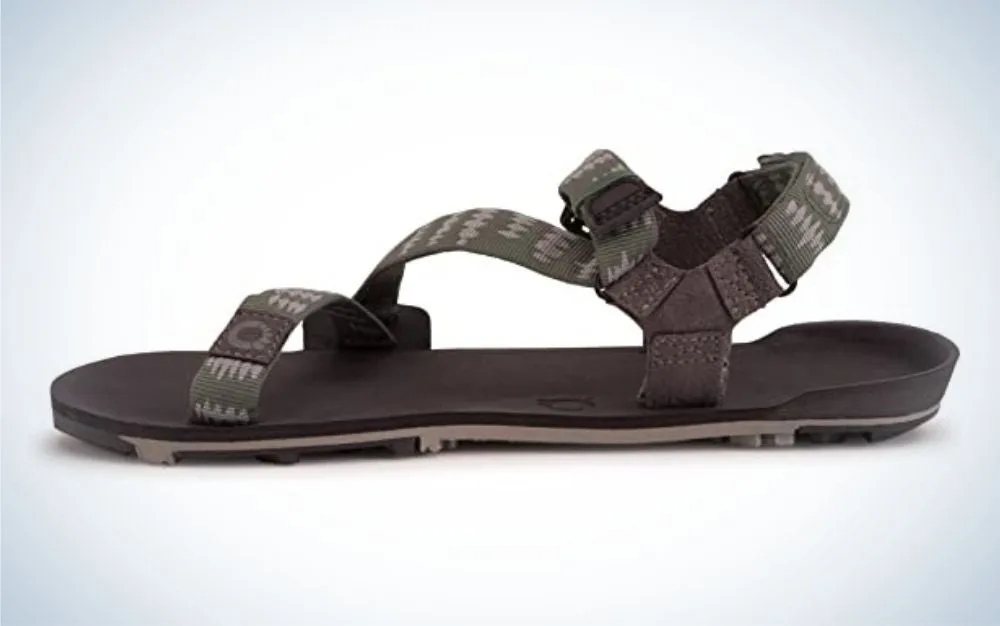
Specs
Weight: 10.8 oz
Materials: rubber and webbing
Closure: webbing with buckle
Pros
Lightweight
5,000 mile warranty
Reliable traction
Durable materials
Cons
Can be slippery to walk around when wet
Like all Xero Shoes, the Z-Trail EV sandals are a lightweight and minimalist design. Although they are light, they are one of the most durable shoes on the market. They provide a barefoot walking experience that can take some getting used to but is better for your feet in the long run.
We chose these as the most versatile option for kayaking shoes because they are hiking sandals. They can be somewhat slippery when wet, but they work well for walking around in the water and wearing in a kayak. The versatility comes from the fact that they can be worn for more than just a water shoe.
The Xero Shoes Z-Trail EV sandals make great sandals for summer walks, moderate hikes, camp shoes, and travel sandals. They pack down small, last a long time, and have a multitude of applications.
Best for Cold Weather: NRS Kicker Remix
Best for Cold Weather
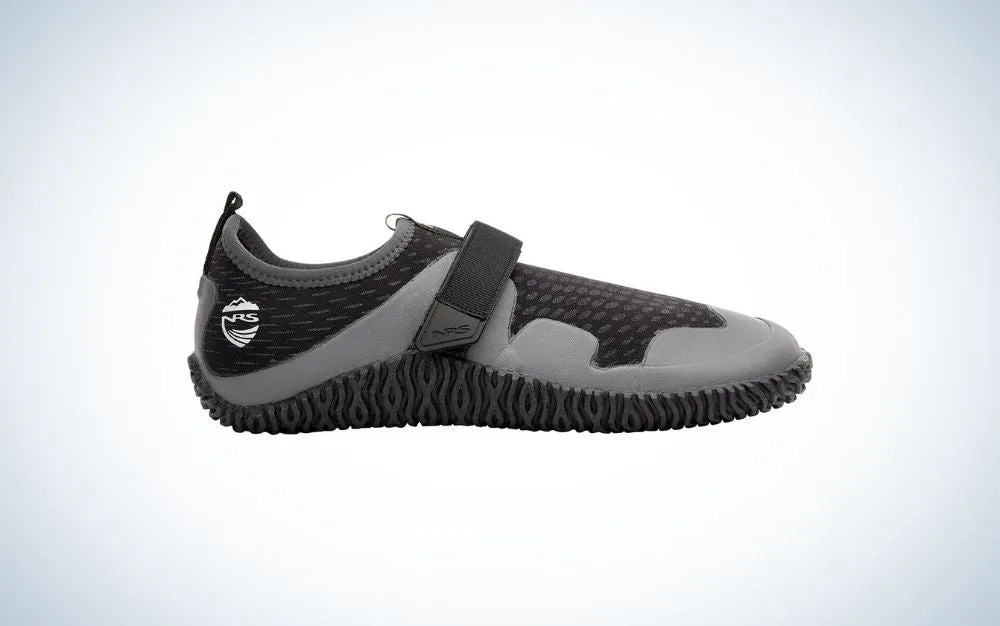
Specs
Weight: N/A
Materials: rubber, neoprene, and plastic
Closure: hook/loop or drawstring (varies)
Pros
Works well for other water sports
Excellent heat retention
Reliable grip on rocks
Protects feet
Cons
Can be too warm at times
Not breathable (due to warmth)
If you are paddling in cold water or cold weather, the NRS Kicker Remix kayaking shoes are an excellent choice. They are a bit more expensive than other options on our list but still reasonable for the value they provide.
Depending on the website you buy them from and the style you are looking for, they can have varying closure systems. Some older styles seem to be a slip-on version with a drawstring, while newer ones either have a hook and loop design or velcro. No matter the closure system that they are equipped with, though, all of them seem to be quite secure.
When you paddle in colder conditions, keeping your feet warm and protected is no easy task. It isn’t always possible to keep your feet completely dry, so having a shoe that can adequately keep moisture out while holding heat in is a game-changer.
Best Neoprene: Neo Sport Premium Neoprene Wetsuit Boots
Best Neoprene

Specs
Weight: Varies
Materials: Neoprene and rubber
Closure: Zipper
Pros
Three thickness options
Lightweight
Puncture resistant sole
Optional sole inserts
Cons
Zipper isn’t as durable as the rest of the shoe
If you are a fan of neoprene but want a kayaking shoe you can wear in warmer weather, the Neo Sport Premium Wetsuit Boots are worth looking at. They come in 3mm, 4mm, and 5mm thicknesses allowing you to choose how warm you need them to be.
Not only that, but the materials are durable, and you have the option to add a sole insert for even better protection. Even without the insert, the soles are puncture-resistant, protecting your feet from debris or rocks when walking in the water.
The only noticeable downside to these boots is that the zipper can wear out faster than the rest of the boot. If you take care of the zipper and use it gently, it should last quite some time, but pay attention to the zipper and area around the zipper, so you can repair them before they have reached a point of no return.
What to Consider When Choosing Shoes for Kayaking
Like any kayaking accessories
, all kayaking shoes have a best use, and some on the market simply don’t work all that well. Read through the buying considerations below to help you identify the type of shoes that best suit your kayaking style.
Types of Kayaking Shoes
Any shoe can be a kayaking shoe if you want it to be. Regardless, having a shoe that works well in water is ideal. That means a standard tennis shoe may not be the best option.
Many summer shoe designs like flip flops, sandals, crocs, and water shoes are suitable for kayaking. Something like a flip flop, though, isn’t very secure and won’t have much if any traction. Water shoes tend to be a more versatile option, and hiking sandals are another common choice.
There are shoes designed not only for water sports but specifically for kayaking. Many of these shoes are for whitewater kayaking and other kayaking sports. Someone using a pedal kayak
for a day out fishing doesn’t necessarily need to have a sporting shoe designed for kayak athletes, but they can work for either.
That said, when discussing the type of kayaking shoe, we can go beyond those standard options mentioned above. Kayaking-specific shoes are often defined by the season they are best suited for, the height, and the breathability (or ability to drain). Shoes with a lot of mesh work well for summer adventures, while neoprene is ideal for cold weather. Some paddling shoes or wetsuit boots will have a tall upper, extending up your leg much further than a water shoe that sit below your ankle.
Then, we have kayaking/water shoes that can also be used for hiking. These are great for kayakers or paddlers who tour and have some portaging on the agenda. Since there is some hiking involved in portaging, it is great not to have to change your shoes, but you still want to have enough support and traction for the hike to be safe and comfortable.
Hiking sandals can be a great option here, but there are also closed-toed kayaking/hiking shoes that are suitable.
Materials
Wearing shoes made from materials meant to be around water is ideal for kayaking shoes. Other standard materials commonly used to construct shoes can deteriorate faster, take longer to dry and make it dangerous to walk around when wet.
Look for shoes that are made from waterproof materials like neoprene or rubber. Other synthetics can also work for kayaking, and standard water shoes are often a combination of several synthetic materials.
Since water-specific shoes get wet, finding antimicrobial materials helps prevent odors from forming in the shoes. We recommend drying the shoes entirely before storage, no matter the shoe type.
Other than moisture, the outside temperature can influence the materials. For cold weather, neoprene is an unbeatable material
. For warm weather, neoprene will be very hot because it lacks breathability.
Fit and Closure
Having kayaking shoes that fit appropriately may not be as important as having the best fit for a kayak life vest
. However, ill-fitting shoes can still be dangerous when performing outdoor activities. As a standard, kayaking shoes should be snug to your feet. You want to minimize the amount of movement that can occur, even when they are wet. They shouldn’t have bulky or protruding features that can get stuck on things or dig into your skin.
The type of closure can impact the shoe’s overall fit, and closure systems are often the first part of the shoe to wear out. Common closure types seen for kayaking or water shoes include:
Velcro: shoes like sandals, booties, and some water shoes may utilize a velcro closure. These provide a very secure fit and are easy to take on and off. Unfortunately, Velcro doesn’t always hold up well with extensive water exposure, so be aware that durability is in question here.
Zippers: often used for wetsuit boots or other neoprene water shoes, zippers are a secure closure but don’t offer much adjustability. They can also break easily and dig into your skin. If you don’t have to walk much in the shoes, a zipper can work but it isn’t our top choice.
Laces: time-consuming to take on and off; traditional laces aren’t very popular with water shoes, but some have them. Much like velcro, laces wear out quickly the more they are exposed to water, but they are also easily replaced. They are far more adjustable and have something like a zipper, though, so not a bad choice.
Bungee Lacing: these drawstring-like laces are very secure and give you a good mix of benefits from slip-on shoes and shoes with laces. They provide a high level of adjustability and make for a tight, secure fit.
Slip-on shoes are an excellent choice for water shoes too. They are easy to pull on and off, but they won’t be quite as tight or as secure as shoes with a closure system. Slip-on shoes can be a great option if you are a recreational kayaker and don’t plan to walk or hike that much.
FAQs
Q: Can I wear sneakers while kayaking?
Yes, you can wear sneakers while kayaking, but they may not be the most comfortable option. Realistically, you can wear any pair of shoes you want while kayaking if you are okay with them getting wet. If you are getting into kayaking, using an old pair of running shoes, sandals, standard water shoes, or even a pair of crocs will work fine.
Q: How much do shoes for kayaking cost?
How much shoes for kayaking cost depends on the quality, brand, and type of shoes you decide to purchase. Low-quality water shoes and sandals can be as affordable as $5-10, but they likely won’t last you very long. More durable and activity-specific kayaking shoes will be anywhere from $30-100+. The most affordable option for kayaking shoes is to wear a pair of shoes you already have. If you are a novice or beginner kayaker, wearing a pair of sandals or crocs works.
Q: How do I keep my feet dry while kayaking?
The best way to keep your feet dry while kayaking is to wear a spray skirt, improve your paddling skills, or change your paddling style/length. Not getting wet isn’t very realistic for most types of kayaking, but on flat, calm water, it will be easier. Kayaking shoes made from neoprene or wet suit boots will be the most effective to keep your feet warm and dry while you kayak.
Q: What shoes do you wear kayaking in the winter?
Neoprene paddling shoes are the most comfortable for kayaking in the winter. Neoprene keeps water out and the heat in while you paddle in cold weather. Quality neoprene boots may also allow you to wear warm socks, keeping them dry and your feet a bit warmer.
Q: Can you go hiking in kayaking shoes?
You can go hiking in some kayaking shoes, but not all of them will be durable enough or comfortable for extended walking. There are kayaking shoes designed to be comfortable for wearing onshore and while walking in rivers. Look for durable soles and tread/lug designs suitable for the terrain and length of hiking.
Final Thoughts on the Best Shoes for Kayaking
Best Overall: Mishansha Quick Drying
Best for Travel: VIFUUR Water Sports Shoes
Most Versatile: Xero Shoes Z-Trail EV
Best for Cold Weather: NRS Kicker Remix
Best Neoprene: Neo Sport Premium Neoprene Wetsuit Boots
Finding the best kayaking shoes for your needs is as easy as finding a pair of shoes you don’t mind getting wet. The time of year and the type of kayaking you enjoy can all impact the shoes that work for you. If you participate in several water sports, finding a pair of shoes that can be used for multiple sports can be great as well.
Why Trust Us
For more than 125 years, Field & Stream has been providing readers with honest and authentic coverage of outdoor gear. Our writers and editors eat, sleep, and breathe the outdoors, and that passion comes through in our product reviews. You can count on F&S to keep you up to date on the best new gear. And when we write about a product—whether it’s a bass lure or a backpack—we cover the good and the bad, so you know exactly what to expect before you decide to make a purchase.

